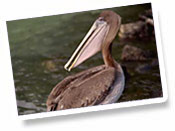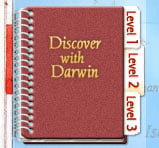 Congratulations
on successfully completing your scientific investigation! Congratulations
on successfully completing your scientific investigation!
Now that you've started on your own scientific journey, take it
to the next level by continuing your research, putting it all together,
and creating a presentation to share what you know.
Even though Charles Darwin never returned to the Galápagos
Islands after 1835, his careful observations and meticulous note-taking
made it possible for the experience to live on. He drew on this
amazing experience for the rest of this life.
Putting it Together:
Some Do's and Don’ts of a Research Presentation
There are some important keys to putting together a solid research
presentation. Whether it’s a written report, an oral presentation,
or a multimedia experience, keep in mind the following tips and
ideas:
- Don’t trust your memory. The reason you typed all those
notes in your Field Notebook is because they make a wonderful
resource as you organize your experience.
- Try to remember when you didn’t know anything. The audience
for a research report will enjoy following in your footsteps.
Let the audience in on how you made your discoveries. It’s
fine and even desirable to share your mistakes. No great research
was ever accomplished without some false starts, and confusion
on the part of the scientist. Honesty and persistence can lead
to impressive results.
- It’s true, a picture can be worth a thousand words. When
sharing information with your audience, use visual aids whenever
possible. It’s one thing to talk about the different shaped
shells of the giant tortoise. It’s quite another to see
several photographs. Even if you are unable to find photos, you
can create illustrations and diagrams that can make a huge difference.
|







